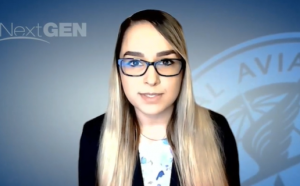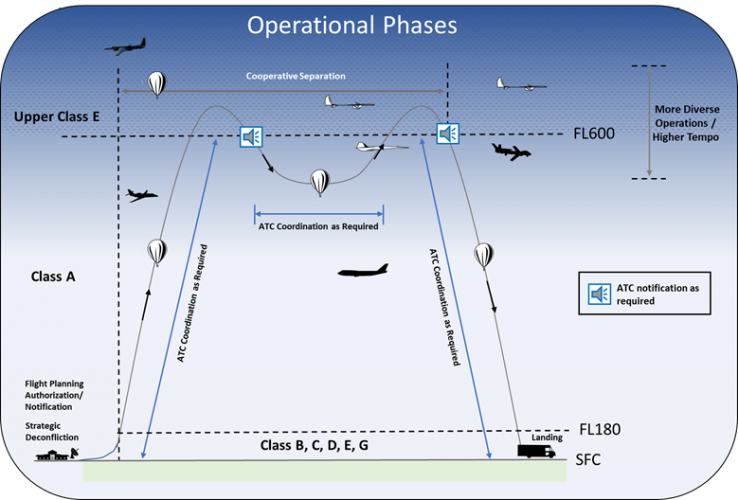By Jenny Beechener
The Federal Aviation Administration (FAA) is working with NASA and industry to decide how operators can communicate effectively and share the upper airspace, said Michelle Cady, FAA Class E Traffic Management (ETM) Programme Manager. “There are a multitude of different information sharing techniques we are going to try to utilise. Cooperative separation is a traffic management approach that relies on information sharing between different operators.” The FAA is leveraging this principle of cooperative separation to achieve operations at scale and released version 1.0 of its ETM concept of operations in May 2020.
A European concept of operations is expected within the next 18 months according to Henk Hof, Manager of the SESAR European Concept for Higher Airspace operations (ECHO) project. “There will be more direct communications and fewer strategic exchanges. Security aspects must not be overlooked in the cross-border nature of this traffic,” added Dragos Tonea, Eurocontrol Integration of new entrants in European ATM Network operations (iNEO) programme manager.
A unique virtual roundtable hosted by ICAO, ATCA and the SESAR Joint Undertaking brought key high altitude stakeholders together to discuss operational concepts on 9 December 2020. FAA Chief Scientist Steve Bradford said ICAO is central to achieving a global concept. “The goal is an ecosystem that enables vehicles to fly closer together, increases capacity with equitable access. Programmes like ETM and ECHO are necessary to ensure we provide capacity balancing.” Developing the correct architecture is key to optimising high altitude airspace where “it is not feasible for the FAA to provide air traffic services to an unlimited altitude”.

Michelle Cady, FAA Class E Traffic Management (ETM) Programme Manager
The airspace above FL600 (60,000 ft) is occupied by military, supersonic, fixed wings and balloons, operating in different ways. The mix of unmanned vehicles, piloted vehicles, fast movers and slow movers calls for a management model that provides flexibility for all these operations. Transition between lower and higher airspace is expected to be supported by a ‘flexible floor’ concept developed by the international partners.
For more information visit:
US Air Traffic Control Association (ATCA) Annual 7-10 December 2020 online event, visit: https://www.atca.org/annual




